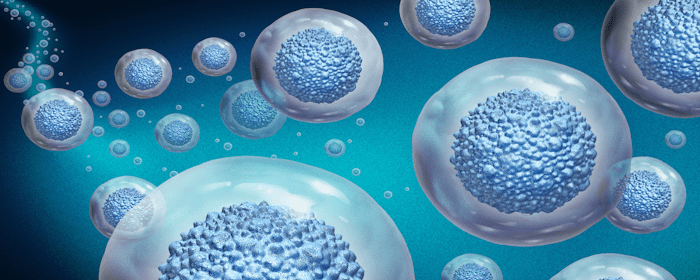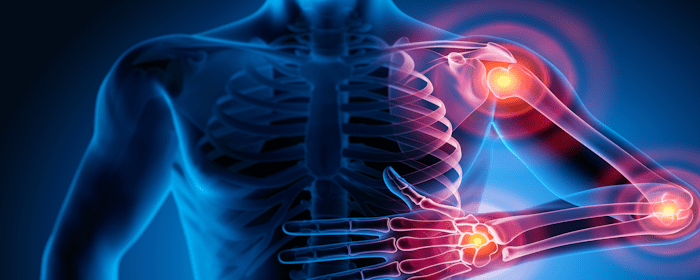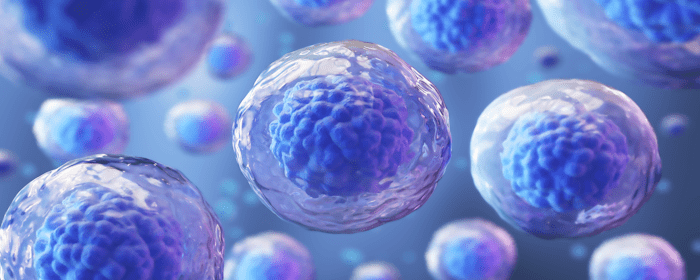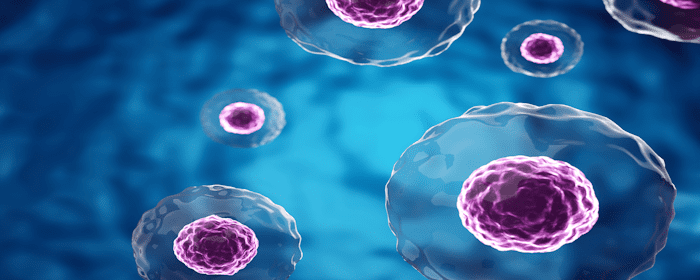
by admin | Jun 26, 2025 | Degenerative Disc Disease, Mesenchymal Stem Cells, Regenerative Medicine, Stem Cell Research, Stem Cell Therapy
Degenerative disc disease (DDD) is one of the most common causes of chronic low back pain. It happens when the spinal discs, which act like cushions between the bones of the spine, begin to wear down over time. This process is often part of normal aging, but it can also be influenced by genetics, lifestyle, injuries, and overall health.
As the discs degenerate, they lose their ability to absorb shock. This can lead to pain, stiffness, and in some cases, additional spinal conditions such as herniated discs, spinal stenosis, or instability between vertebrae. People living with DDD often experience pain that limits daily activities, disrupts sleep, and decreases overall quality of life.
Conventional treatments for DDD usually begin with conservative approaches, such as physical therapy, nonsteroidal anti-inflammatory drugs (NSAIDs), chiropractic care, or acupuncture. For patients whose pain does not improve, surgery may be considered. Surgical options include procedures like spinal fusion or disc replacement. While these approaches can offer short-term relief, they often do not stop the progression of degeneration, and some patients continue to experience pain in the long run.
Because of these challenges, researchers have been looking into new ways to slow or even reverse the disc degeneration process. One of the most promising areas of research involves the use of stem cells—specifically mesenchymal stem cells (MSCs).
As part of this study, Xie et al. evaluate the clinical efficacy and safety of MSC transplantation in patients with DDD.
Why Stem Cells Are Being Studied for DDD
Stem cells are special cells that can develop into many different cell types in the body. Mesenchymal stem cells, or MSCs, are found in bone marrow, adipose tissue, and other areas. They have unique properties that make them attractive for treating degenerative conditions.
MSCs can reduce inflammation, support tissue repair, and even help create new structural material for damaged tissues. In the case of DDD, researchers believe that MSCs could help regenerate spinal discs by:
- Reducing inflammation inside the disc
- Stimulating the production of new, healthy disc tissue
- Improving hydration of the disc, which helps maintain its cushioning ability
Animal studies have shown encouraging results, suggesting that MSC therapy could help preserve disc structure and function. Some early human studies have also suggested potential benefits. However, until recently, clinical evidence was limited and sometimes inconsistent.
To better understand whether MSCs are effective for DDD, the authors of this study performed a meta-analysis—an analysis that combines results from multiple studies to look at the bigger picture.
What the Meta-Analysis Looked At
This study by Xie et al. reviewed randomized controlled trials (RCTs), which are considered one of the most reliable types of clinical research. The researchers looked at trials that compared MSC treatment to standard care or control groups in patients with degenerative disc disease.
They evaluated two main outcomes:
- Pain reduction, measured with the Visual Analog Scale (VAS). This tool asks patients to rate their pain on a scale from 0 (no pain) to 10 (worst possible pain).
- Functional improvement, measured with the Oswestry Disability Index (ODI). This questionnaire looks at how back pain affects everyday activities like sitting, walking, sleeping, lifting, and social life.
They also reviewed safety outcomes, including whether MSC treatments led to more adverse events compared to control groups.
By combining results from multiple studies, the meta-analysis aimed to answer two important questions:
- Does MSC therapy improve pain and function for patients with DDD?
- Is MSC therapy safe?
How MSC Therapy Affects Pain
The results of the pooled analysis showed that MSC therapy was associated with significant reductions in pain scores. Patients who received MSC treatment reported lower VAS scores compared to those who did not.
When the authors looked at different time points, they found that MSC therapy reduced pain at 3 months, 6 months, 12 months, and even beyond 24 months. This suggests that the benefits are not just short-term but may continue over time.
Another way the authors measured results was by looking at how many patients achieved “clinically meaningful” pain relief. This means the improvement was large enough to make a real difference in daily life, not just a small statistical change. They found that a higher percentage of MSC-treated patients reached these meaningful improvements compared to control patients.
According to Xie et al., this demonstrates that MSC therapy doesn’t just lower average pain scores on paper—it helps more patients experience relief they can feel.
How MSC Therapy Affects Function
Pain relief is important, but for people with DDD, regaining function is just as critical. The meta-analysis showed that MSC therapy also improved ODI scores, meaning patients could perform daily activities with less difficulty.
The improvements were especially noticeable in longer-term follow-up, at 24 months or more. While shorter-term results (3, 6, and 12 months) showed trends toward improvement, the most significant functional gains appeared over time. This suggests that MSC therapy may take time to have its full effect, as the cells work to repair and stabilize the damaged disc environment.
Like with pain, more patients in the MSC groups achieved meaningful improvements in function compared to those receiving other treatments.
Safety of MSC Therapy
Safety is always a concern with new therapies. MSCs are generally considered low-risk because they do not trigger strong immune responses. In the studies included in this analysis, most patients tolerated MSC therapy well.
The most commonly reported side effects were back pain, joint pain, or muscle spasms—symptoms that were not significantly different between MSC and control groups. However, there was a small but statistically significant increase in treatment-related side effects in the MSC groups. Importantly, serious adverse events were rare and not significantly different between groups.
This means that while MSC therapy appears relatively safe, careful monitoring is still important, and more research is needed to fully understand potential risks.
Clinical Implications for Patients
The results of this meta-analysis suggest that mesenchymal stem cell therapy could offer meaningful benefits for people living with degenerative disc disease. Patients who received MSCs reported:
- Reduced back pain over both short- and long-term follow-up
- Improved ability to perform daily activities
- Relief that was more likely to reach clinically important levels
At the same time, the therapy appeared generally safe, with no major differences in serious adverse events compared to standard treatments.
According to the authors, this makes MSC therapy a promising option for patients who have not found relief through conservative measures and want to avoid or delay surgery. However, it is important to remember that MSC treatment for DDD is still being studied. More large, high-quality clinical trials are needed to answer key questions, such as:
- What is the best source of MSCs (bone marrow, fat tissue, or others)?
- How many cells are needed for optimal results?
- How often should treatments be repeated?
- Which patients are most likely to benefit?
Until these questions are answered, MSC therapy should be considered experimental, though the evidence so far is encouraging.
Limitations of the Research
While the meta-analysis strengthens the case for MSC therapy, there are some limitations to keep in mind. The number of studies and patients included was relatively small. Some studies showed inconsistent results, and not all measured outcomes the same way.
In addition, the quality of MSC preparations can vary depending on how cells are collected, processed, and stored. Differences in patient age, health status, and stage of disc degeneration may also affect results.
These factors mean that while the findings are promising, they should be interpreted cautiously until more research is available.
The Future of MSC Therapy for DDD
Research on stem cells and regenerative medicine is moving quickly. MSC therapy represents one of the most exciting frontiers in treating degenerative disc disease because it targets the underlying cause of the condition rather than just managing symptoms.
If ongoing studies continue to show positive results, MSC therapy could become a standard treatment option in the future. It has the potential to provide long-lasting pain relief, restore function, and possibly even slow or reverse the disc degeneration process.
For now, patients interested in stem cell therapy should consult with a qualified healthcare provider to learn whether they may be a candidate for clinical trials or specialized regenerative medicine programs.
As research continues, the authors believe that MSC therapy may become an important option for patients with chronic back pain caused by disc degeneration, helping them move beyond symptom management toward true disc repair and long-term relief.
Source: Xie B, Chen S, Xu Y, Han W, Hu R, Chen M, He R, Ding S. Clinical Efficacy and Safety of Human Mesenchymal Stem Cell Therapy for Degenerative Disc Disease: A Systematic Review and Meta-Analysis of Randomized Controlled Trials. Stem Cells Int. 2021 Sep 13;2021:9149315. doi: 10.1155/2021/9149315. PMID: 34557231; PMCID: PMC8455197.

by admin | Jun 19, 2025 | Mesenchymal Stem Cells, Regenerative Medicine, Stem Cell Research, Stem Cell Therapy
Rheumatic diseases are a broad group of chronic conditions that affect the joints, muscles, bones, ligaments, and sometimes internal organs. They are usually the result of a malfunctioning immune system that attacks healthy tissues. This leads to inflammation, pain, stiffness, and, in some cases, permanent organ damage. Common conditions in this group include rheumatoid arthritis (RA), systemic lupus erythematosus (SLE), systemic sclerosis (SSc), osteoarthritis (OA), ankylosing spondylitis (AS), and osteoporosis (OP).
These illnesses can significantly reduce a person’s quality of life. Many people face persistent pain, fatigue, and reduced mobility, as well as the emotional challenges of living with a lifelong condition. While current treatments such as anti-inflammatory drugs, immunosuppressants, and biologic medications help manage symptoms, they do not cure the disease. They also come with risks of side effects and may not provide enough relief for everyone.
As part of this review, Hetta et al. summarize the clinical progress of MSC therapy in rheumatic diseases, highlight key findings from preclinical and clinical studies, and discuss challenges and future directions.
Role of Mesenchymal Stem Cell Therapy in Rheumatic Disease Management
Stem cells are unique because they can renew themselves and develop into many different types of cells. Mesenchymal stem cells, or MSCs, are a type of adult stem cell that can be found in bone marrow, fat tissue, umbilical cord blood, and even skin.
MSCs are particularly interesting to researchers because they can transform into bone, cartilage, and adipose cells. They also release natural substances that reduce inflammation, calm the immune system, and support healing. These qualities make them an appealing option for treating autoimmune and inflammatory diseases such as rheumatic conditions.
Why MSCs May Help Rheumatic Diseases
In rheumatic diseases, the immune system mistakenly attacks the body’s own tissues. This sets off cycles of inflammation and damage. MSCs may help by calming the overactive immune response, encouraging the growth of protective immune cells, and releasing growth factors that repair damaged tissues.
Rather than only masking symptoms, MSC therapy aims to restore balance to the immune system and support long-term improvement. This is why it has attracted so much attention in both laboratory research and clinical trials.
Promising Results Across Rheumatic Diseases
According to the authors, research into mesenchymal stem cells (MSCs) has shown encouraging results across a variety of rheumatic diseases where current treatments often fall short. Specifically:
- In lupus, MSCs appear to calm harmful immune cells, promote regulatory ones, and reduce kidney inflammation, with early trials showing improvement in patients resistant to standard drugs.
- In rheumatoid arthritis, studies suggest MSCs can lower inflammatory signals, protect cartilage, and ease symptoms, particularly in severe cases. Ankylosing spondylitis, which mainly affects the spine, may also benefit from MSC therapy, as both animal and small human studies indicate reduced inflammation and pain.
- For osteoarthritis, MSCs may help repair cartilage and ease joint pain, with clinical trials reporting improved function in the knees and hips.
- Osteoporosis research shows MSCs may encourage bone-building cells and inhibit bone breakdown, with exosome-based approaches offering a potential “cell-free” treatment.
- In systemic sclerosis, MSCs have been linked to reduced scarring and improved skin and organ function.
- In rare muscle disorders like dermatomyositis and polymyositis, early studies suggest gains in muscle strength and healing where conventional therapies have failed.
Together, these findings highlight MSCs as a promising new approach across a wide spectrum of autoimmune and degenerative conditions, though more large-scale and long-term studies are needed.
Ongoing Challenges and Emerging Strategies in MSC Therapy
Despite encouraging progress, MSC therapy still faces challenges. Hetta et al. report that results are not consistent, and not every patient responds the same way. The source of MSCs, the number of cells given, and the method of delivery can all affect outcomes.
Another challenge highlighted by the authors is standardization. To move MSC therapy into widespread use, researchers need to agree on best practices for collecting, preparing, and administering these cells.
Future approaches may involve combining MSC therapy with existing medications, engineering MSCs to work more effectively, or using MSC-derived exosomes as a safer alternative to full cell transplantation.
Therapeutic Promise and Future Outlook for Rheumatic Diseases
Mesenchymal stem cells represent one of the most exciting possibilities for treating rheumatic diseases. Research so far shows potential benefits for conditions such as lupus, rheumatoid arthritis, osteoarthritis, osteoporosis, systemic sclerosis, ankylosing spondylitis, and inflammatory muscle diseases. Unlike traditional medications that only ease symptoms, MSCs may help restore immune balance and encourage tissue repair.
While more research is needed to understand the long-term effects and best methods, MSC therapy offers real hope to millions of people living with painful and disabling conditions. With continued progress, the authors believe that it may one day change the way these chronic diseases are treated and give patients new opportunities for healing and improved quality of life.
Source: Hetta HF, Elsaghir A, Sijercic VC, Ahmed AK, Gad SA, Zeleke MS, Alanazi FE, Ramadan YN. Clinical Progress in Mesenchymal Stem Cell Therapy: A Focus on Rheumatic Diseases. Immun Inflamm Dis. 2025 May;13(5):e70189. doi: 10.1002/iid3.70189. PMID: 40353645; PMCID: PMC12067559.

by admin | Jun 17, 2025 | Mesenchymal Stem Cells, Multiple Sclerosis, Regenerative Medicine, Stem Cell Research, Stem Cell Therapy
Multiple sclerosis (MS) is a chronic condition that affects the central nervous system, where the immune system mistakenly attacks the protective covering of nerve fibers, called myelin. This damage interrupts communication between the brain and the body, leading to symptoms such as muscle weakness, difficulty walking, fatigue, and loss of coordination. MS is a complex disease with varying patterns. Some people experience relapsing and remitting symptoms, while others develop progressive forms that steadily worsen over time.
Current treatments for MS focus on reducing the frequency of relapses, managing symptoms, and slowing disease progression. However, these treatments are often limited in their effectiveness, especially in severe or progressive forms of the disease. Some medications can also cause significant side effects, including flu-like symptoms, skin irritation, or increased risk of infections. This has led researchers to explore new therapeutic strategies, including the use of mesenchymal stem cells (MSCs).
In this review, Islam et al. assess the effectiveness and safety of MSC therapy in individuals diagnosed with MS.
Understanding Mesenchymal Stem Cells
MSCs are a type of adult stem cell found in multiple tissues, such as bone marrow, adipose, and umbilical cord tissue. They are known for their ability to grow and differentiate into various cell types, including bone, cartilage, and nerve cells. MSCs also produce molecules that help regulate inflammation and support tissue repair.
Because of these properties, MSCs have been investigated as a potential therapy for many conditions, including heart disease, spinal cord injury, and autoimmune disorders. In MS, researchers believe MSCs could help repair damaged nerve cells, reduce inflammation, and potentially slow or even reverse disease progression.
Clinical Evaluation of MSC Therapy for MS
This systematic review and meta-analysis by Islam et al. examined the effectiveness and safety of MSC therapy in patients with MS. This study pooled data from multiple clinical trials, looking at how patients’ conditions changed after receiving MSC treatment. The main measure used to track improvement was the Expanded Disability Status Scale (EDSS), a standard tool used in MS research to evaluate mobility, coordination, and overall neurological function.
The analysis found that approximately 40% of patients experienced improvements after MSC therapy. Another 33% remained stable, while about 18% saw a worsening of their condition. According to the authors, these results suggest that MSC therapy could have a meaningful impact on disease progression for a significant proportion of MS patients.
Safety Profile of MSC Therapy
Safety is a critical consideration for any new treatment. In this meta-analysis, no major complications were reported. Some minor side effects, including headaches, fever, urinary tract infections, and respiratory infections, were observed. Most of these were mild and manageable, indicating that MSC therapy is generally well-tolerated.
Interestingly, the source of the MSCs appeared to influence the therapy’s effectiveness. MSCs derived from umbilical cord or placental tissue were associated with higher improvement rates (57%) compared to MSCs derived from bone marrow (38%). According to the authors, these differences may be related to factors such as lower immunogenicity, higher cell proliferation capacity, and non-invasive collection methods for umbilical cord or placental MSCs.
Routes of MSC Administration and Effectiveness
MSCs can be delivered intravenously or directly into the cerebrospinal fluid through intrathecal injection. The study found that intravenous administration resulted in better outcomes, with 58% of patients showing improvement, compared to 33% for intrathecal administration. This information may guide future treatment protocols and clinical decisions.
Mechanisms of MSC Therapy in MS
The therapeutic effects of MSCs in MS are thought to be driven by their ability to modulate the immune system and promote nerve repair. In MS, immune cells such as T helper cells and microglia contribute to inflammation and nerve damage. MSCs can shift the balance of these immune cells, reducing harmful inflammation while encouraging protective and repair-oriented responses.
Additionally, MSCs may directly support the regeneration of neurons and glial cells, which are essential for maintaining the structure and function of the nervous system. By promoting a healthier environment for nerve cells, MSC therapy has the potential to improve neurological function and slow disease progression.
Insights from Clinical Trials
Several clinical trials have evaluated MSC therapy for MS, both as randomized controlled studies and observational research. The pooled data from these trials support the therapy’s potential to improve or stabilize neurological function. Early reports also confirm its safety, with minimal serious adverse events.
Studies suggest that factors such as patient age, disease severity, and the origin of MSCs influence outcomes. For example, younger donor cells and MSCs from umbilical cord or placental tissue appear to have higher efficacy. Intravenous administration also seems more effective than intrathecal delivery.
Comparison with Conventional MS Treatments
Existing MS treatments, such as disease-modifying drugs like Ocrelizumab, Fingolimod, and Teriflunomide, are effective for some patients but often fall short in severe or progressive cases. Side effects and long-term risks can also limit their use. MSC therapy offers a novel approach by potentially repairing nerve damage rather than simply managing symptoms or suppressing the immune system. For patients who do not respond well to conventional treatments, MSC therapy may provide a new option.
Current Limitations and Future Research Directions
While MSC therapy shows promise, there are still unanswered questions. Clinical trials vary in terms of the number of patients, dosage, source of MSCs, and methods of administration, which can make it challenging to compare results. There is also a need for larger, long-term studies to determine the most effective protocols and confirm the durability of treatment benefits.
Future research will likely focus on optimizing MSC doses, identifying the best cell sources, and refining delivery methods. Researchers also aim to better understand the mechanisms by which MSCs promote repair and reduce inflammation in the nervous system.
Future Outlook for MSC Therapy in Multiple Sclerosis
Mesenchymal stem cell therapy represents a promising new approach for treating multiple sclerosis. Many patients experience improvements or maintain stability after receiving MSCs, and serious adverse events are rare. The therapy’s ability to modulate the immune system, support nerve repair, and promote tissue regeneration sets it apart from conventional treatments.
Ongoing research is focused on refining MSC therapy protocols, determining optimal dosages, and assessing long-term outcomes. Larger, high-quality clinical trials will be essential to establish MSC therapy as a reliable and effective option for people living with MS.
For patients exploring new treatment possibilities, MSC therapy offers hope for improved neurological function, better quality of life, and potential disease stabilization.
Source: Islam MA, Alam SS, Kundu S, Ahmed S, Sultana S, Patar A, Hossan T. Mesenchymal Stem Cell Therapy in Multiple Sclerosis: A Systematic Review and Meta-Analysis. J Clin Med. 2023 Sep 30;12(19):6311. doi: 10.3390/jcm12196311. PMID: 37834955; PMCID: PMC10573670.

by admin | Apr 29, 2025 | Mesenchymal Stem Cells, Osteoarthritis, Regenerative Medicine, Stem Cell Research, Stem Cell Therapy, Umbilical Stem Cell
Knee osteoarthritis (OA) is a long-term condition that affects millions of people worldwide. It occurs when the cartilage in the knee begins to break down, often due to aging, injury, or repeated stress on the joint. Early signs of OA include swelling, stiffness, and pain in the knee. Over time, the condition worsens, leading to a narrowing of the space between bones, the development of bony growths (osteophytes), and reduced joint mobility. This progression can significantly impact a person’s quality of life, especially in older adults.
One of the major challenges in treating knee OA is the poor ability of cartilage to repair itself. Cartilage lacks blood vessels and relies on nearby joint fluid and surrounding tissues for nutrients, making it especially vulnerable to damage. As a result, finding effective ways to heal or regenerate damaged cartilage has been a major focus of research in recent years.
In this review, Zhang et al. summarize the basic research and clinical studies to promote inflammatory chondrogenesis in the treatment of OA and provide a theoretical basis for clinical treatment.
The Role of Stem Cells in Cartilage Repair
Researchers have explored several treatment options for OA, including injections of corticosteroids, platelet-rich plasma, sodium hyaluronate, and more recently, stem cells. Among the various stem cell types being studied, human umbilical cord mesenchymal stem cells (HUC-MSCs) have shown promising results.
HUC-MSCs are a type of stem cell collected from the umbilical cords of newborns. These cells are especially attractive for medical use because they are easy to obtain, do not cause pain or harm to the donor, and are free from the ethical concerns that sometimes surround embryonic stem cells. They have also demonstrated the ability to multiply, change into different cell types (including cartilage cells), and regulate inflammation in the body.
Biological Benefits of HUC-MSCs in OA Treatment
According to the authors, what sets HUC-MSCs apart is their ability to both repair cartilage and control the inflammatory processes that worsen OA. These cells release helpful substances like cytokines, growth factors, and extracellular vesicles that support cartilage repair and reduce joint inflammation. HUC-MSCs can also develop into chondrocytes – cells that produce and maintain healthy cartilage.
In studies comparing HUC-MSCs to bone marrow-derived stem cells, HUC-MSCs have shown a higher potential for cartilage formation and a lower tendency to become fat or bone cells. These qualities make them a strong candidate for regenerating joint cartilage in OA patients. Additionally, the extracellular matrix (ECM) they produce is rich in type II collagen, which is essential for building strong, healthy cartilage.
Another biological benefit of HUC-MSCs is their ability to function well in low-oxygen environments, such as the interior of a joint. This makes them well suited for surviving and thriving in the harsh conditions of damaged knee joints. They also produce anti-inflammatory proteins like IL-10 and TGF-β1, which help reduce pain and inflammation, making the joint environment more suitable for healing.
Clinical Use of HUC-MSCs and Evidence of Effectiveness
Over the past decade, HUC-MSCs have been tested in laboratory studies, animal models, and human clinical trials. Results consistently show that these cells can improve symptoms, protect joint structures, and possibly slow the progression of OA.
In animal models of OA, researchers found that injecting HUC-MSCs into the knee joint helped reduce cartilage breakdown and cell death. In these studies, both single and repeated injections produced similar benefits, including better cartilage matrix production and less joint degeneration.
In human trials, HUC-MSCs have been tested in patients with moderate to severe OA. Results show improved joint function, reduced pain, and even signs of new cartilage formation on imaging studies. When compared to traditional treatments like sodium hyaluronate injections, HUC-MSC therapy has been shown to offer faster, longer-lasting relief and more meaningful improvements in joint health.
Additionally, treatment with HUC-MSCs has proven to be well tolerated and safe, with no serious side effects reported. Minor discomfort after the injection was typically short-lived and did not require medical intervention.
Mechanisms of Action and How HUC-MSCs Promote Healing
Zhang et al. found that HUC-MSCs help reduce the harmful effects of OA in several ways. First, they lower levels of inflammatory molecules like IL-1β, TNF-α, and IL-6 that are commonly found in arthritic joints. These substances are responsible for breaking down cartilage and increasing pain. HUC-MSCs also block enzymes such as MMP-13 and ADAMTS-5, which are known to degrade the cartilage structure.
At the same time, HUC-MSCs boost the production of cartilage-supporting proteins like collagen type II, aggrecan, and SOX9. These proteins are critical for rebuilding and maintaining the smooth, elastic tissue that cushions the ends of bones in the joint.
In addition to their anti-inflammatory and regenerative properties, HUC-MSCs influence the immune system by shifting inflammatory cells from a damaging state to a healing state. This shift helps calm the immune response within the joint and supports the repair process.
Several key cell signaling pathways – such as PI3K/Akt, mTOR, and Notch – are involved in this regenerative process. These pathways help control cell survival, growth, and the formation of new cartilage. As researchers continue to uncover how these pathways work, the authors anticipate new possibilities for targeted therapies will emerge.
Advantages Over Traditional and Other Stem Cell Treatments
Compared to other types of stem cells, such as those taken from bone marrow or fat tissue, HUC-MSCs offer multiple advantages. They are more readily available, easier to collect, and carry less risk of causing an unwanted immune response. They also multiply faster, have a greater capacity to form cartilage, and are less likely to develop into bone or fat cells – features that are particularly important when the goal is to repair joint cartilage.
Unlike treatments that simply reduce symptoms, such as painkillers or steroid injections, HUC-MSC therapy has the potential to address the root cause of OA by rebuilding damaged cartilage and rebalancing the joint’s internal environment.
Because of these advantages, the authors believe HUC-MSCs may represent a major step forward in the treatment of OA, especially for patients who have not responded well to traditional therapies or who are looking for a regenerative option before considering surgery.
A Promising Path Forward for Osteoarthritis Care
Human umbilical cord mesenchymal stem cells offer a new and exciting option for patients with knee osteoarthritis. With their ability to reduce inflammation, promote cartilage repair, and restore joint function, HUC-MSCs are rapidly becoming an important focus in regenerative medicine. As more research is conducted and the science behind these cells becomes clearer, they may soon become a standard part of OA treatment, offering hope for millions of people living with joint pain and stiffness.
Zhang P, Dong B, Yuan P, Li X. Human umbilical cord mesenchymal stem cells promoting knee joint chondrogenesis for the treatment of knee osteoarthritis: a systematic review. J Orthop Surg Res. 2023 Aug 29;18(1):639. doi: 10.1186/s13018-023-04131-7. PMID: 37644595; PMCID: PMC10466768.

by admin | Apr 15, 2025 | Mesenchymal Stem Cells, Spinal Cord Injury, Stem Cell Research, Stem Cell Therapy
Spinal cord injury (SCI) is one of the most serious outcomes of spinal trauma. It typically leads to either temporary or permanent loss of sensory, motor, and autonomic nerve functions below the affected area and can significantly impact a person’s quality of life. Worldwide, approximately 10.5 out of every 100,000 people experience SCI. While modern treatments enable 94% of individuals with acute traumatic SCI to survive, long-term survival is often compromised by complications arising after the injury.
In this review, Xia et al. explores the pathophysiological changes that occur following SCI and examines the mechanisms through which MSCs contribute to treatment. The authors also summarize the potential clinical applications of MSCs while addressing the challenges associated with their use and discussing future prospects.
Current Treatment Approaches For SCI
Current therapies for SCI focus on managing the immediate effects of the injury. Standard treatments include stabilizing the spine, surgically decompressing the spinal canal, and initiating rehabilitation programs. These approaches aim to reduce further damage and create conditions that support natural healing processes. However, they do not actively promote the regeneration of damaged nerve cells. The primary goal is to restore neurological function as quickly as possible after addressing the spinal cord compression. Unfortunately, no existing treatment strategies can fully repair damaged nerve cells, leaving an unmet need for innovative therapies.
Primary Spinal Cord Injury
Primary SCI results from direct trauma, such as fractures or dislocations of the vertebrae, which can compress, tear, or even sever the spinal cord. Spinal cord compression is the most common form of primary injury and is often accompanied by damage to blood vessels and the blood-spinal cord barrier (BSCB). The BSCB is a critical structure that maintains the stability and health of the spinal cord by keeping harmful substances out. When the BSCB is compromised, inflammatory molecules and toxic substances infiltrate the injured area, worsening the damage.
Secondary Spinal Cord Injury
Secondary SCI involves a series of biological processes that start within minutes of the initial injury. These changes occur in three overlapping phases: acute (within 48 hours), subacute (48 hours to two weeks), and chronic (lasting up to six months). Secondary injuries can exacerbate the damage caused by the primary injury and often lead to permanent complications.
One of the first effects of secondary SCI is the disruption of the blood supply to the spinal cord, which causes further cell death. As spinal cord cells are destroyed, they release molecules that trigger inflammation. This inflammatory response attracts immune cells to the injury site, which, in turn, release substances that cause additional damage. Neutrophils, a type of immune cell, arrive within an hour of injury and persist for several days, contributing to the worsening of the injury by releasing harmful substances like reactive oxygen species.
The Role of Mesenchymal Stem Cells in SCI
In recent years, mesenchymal stem cells (MSCs) have emerged as a promising option for treating SCI. MSCs are a type of stem cell capable of self-renewal and differentiation into various cell types, making them suitable for tissue repair and regeneration. These cells can be derived from multiple sources, including bone marrow, fat tissue, umbilical cords, and amniotic fluid. MSCs are relatively easy to isolate and store, and their use does not raise significant ethical concerns.
Types of MSCs
The three main types of MSCs used in clinical practice are bone marrow-derived MSCs (BMSCs), adipose-derived MSCs (AD-MSCs), and human umbilical cord-derived MSCs (HUC-MSCs). Each type has unique advantages:
- BMSCs: These cells can differentiate into various tissue types, such as bone, cartilage, and nerve cells. They are effective at reducing inflammation and releasing factors that support nerve regeneration.
- AD-MSCs: Sourced from fat tissue, these cells are easier to obtain in large quantities without causing significant harm. They promote angiogenesis (the formation of new blood vessels) and wound healing by releasing growth factors and other molecules.
- HUC-MSCs: These cells have the highest capacity for proliferation and differentiation. They are smaller in size, allowing them to pass through the BSCB more easily, and they do not pose a risk of fat or vascular embolism.
How MSCs Assist in Treatment of SCI
According to the authors, MSCs offer multiple benefits for SCI treatment, including:
- Immunomodulation: MSCs regulate the immune response at the injury site by interacting with immune cells and releasing anti-inflammatory molecules. This helps reduce inflammation, which is a key factor in secondary injury.
- Neuroprotection and Regeneration: MSCs release neurotrophic factors, such as nerve growth factor (NGF) and brain-derived neurotrophic factor (BDNF), which promote the survival and regeneration of nerve cells. They also inhibit glial scarring, a process that can block nerve regeneration.
- Angiogenesis: MSCs secrete vascular endothelial growth factor (VEGF) and other molecules that encourage the formation of new blood vessels. This improves blood flow to the injured area and helps restore the damaged BSCB.
- Exosome Production: MSCs release exosomes, small vesicles that carry proteins and genetic material to the injury site. These exosomes play a crucial role in reducing inflammation, promoting cell repair, and improving overall tissue recovery.
Future Directions
MSC therapy holds significant promise for improving outcomes in SCI patients. Preclinical studies have demonstrated the ability of MSCs to restore motor function in animal models. In clinical settings, MSCs have shown potential in improving sensory and motor function and aiding bladder control in patients with SCI. However, further research is needed to refine the therapy and address existing challenges.
Mesenchymal Stem Cells: A Promising Path for Spinal Cord Injury Treatment
SCI is a complex condition with devastating consequences for those affected. Current treatments aim to stabilize the injury and create conditions for natural healing but fall short of promoting nerve regeneration. MSCs offer a new avenue for SCI treatment by reducing inflammation, supporting nerve cell regeneration, and improving blood flow to the injured area. While challenges remain, the authors conclude that the advancements in MSC research suggest a bright future for their use in SCI therapy. With continued investigation, MSCs has the potential to become a cornerstone of regenerative medicine for SCI patients.
Source: Xia Y, Zhu J, Yang R, Wang H, Li Y, Fu C. Mesenchymal stem cells in the treatment of spinal cord injury: Mechanisms, current advances and future challenges. Front Immunol. 2023 Feb 24;14:1141601. doi: 10.3389/fimmu.2023.1141601. PMID: 36911700; PMCID: PMC9999104.






 St. Petersburg, Florida
St. Petersburg, Florida
